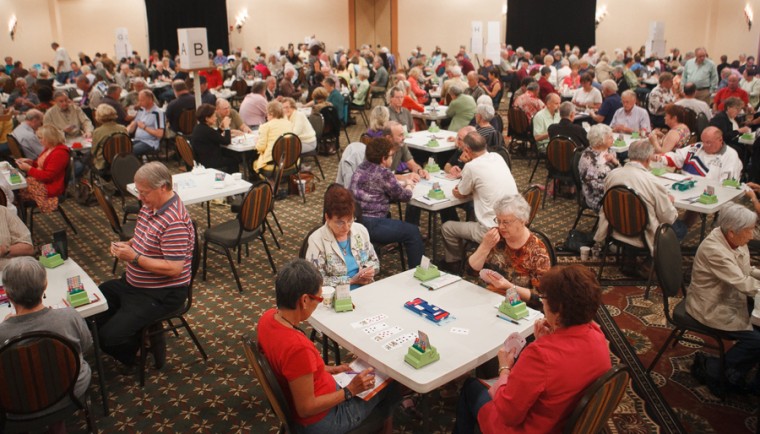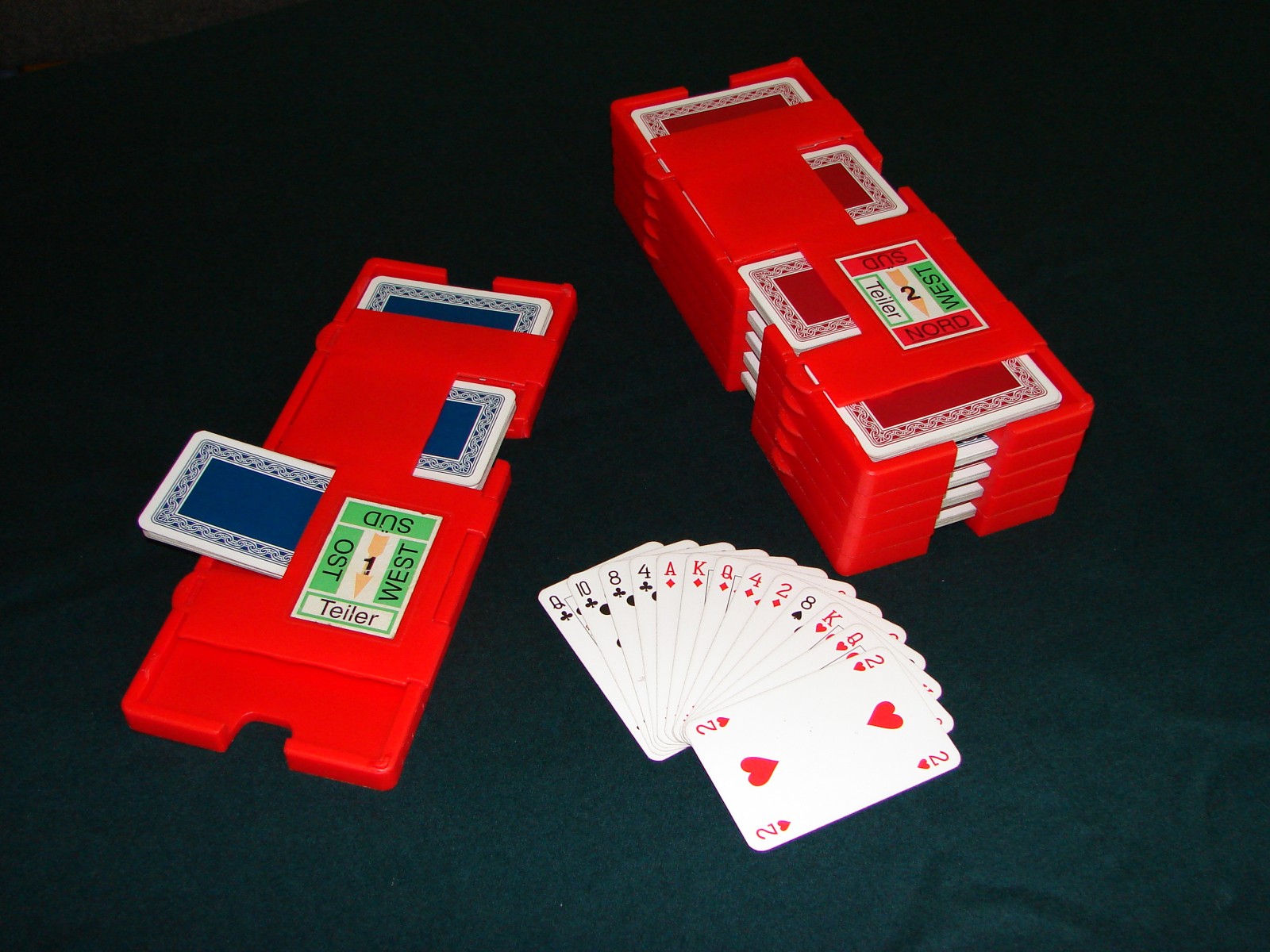Deep thought: 40K Can Learn a LOT From Bridge!


An international Bridge player tells 40K players what they need to do to elevate the game.
A guest editorial from johnwhytenz
Hi All,
There has been a lot of recent discussion here as to whether 40K is competitive or not. I wanted to add another persepective. I used to play bridge (the card game) competitively. I was a member of the NZ national youth team for several years, and I used to travel playing many national, and international tournaments.
Bridge is a game of cards. Designed to be played by four players, the original rules were you would sit down, randomly select your partner, shuffle a deck of cards, deal 13 to each player and play. It’s a trick taking game, like 500 or euchure.
This concept of a game is very luck dependent, you have a random draw of partner, and a random draw of cards. A string of bad hands (or a bad partner) can cause you to loose. It was for many years a light gambling game, and recreational entertainment. In other words it was a beer and pretzel game.
Fassfoward some years and bridge is now being played competitively. There are teams, matches, a world bridge federation, national teams, champtionships, etc. For a game of probability (with cards not dice) that started off as entertainment to be now a world mind sports game is big and there are lessons for war gamers.
What this article will do is to explain how bridge managed to do this, and how wargaming (particularly 40k) is or is not doing this.
One of the first thing bridge did was to codify its rules. The rules of bridge are long and complete, the recent 2008 edition is 192 pages. 40K also has a long ruleset but it is far from complete. War gaming rules are silent on many matters.
Bridge rules list how simple things should be done – such as how to collect cards after a trick. In high level tournaments the types of cards themselves are specified, they must be left and right handed and be identical when held either up one way or inverted. 40K has no standard for dice, rolling dice, marking wounds, recording game information, or other simple things that are done at the table. To me this is like sports teams using irregular (or soft!) balls. I don’t care for what specifics are chosen, but there should be rules as to what types of dice are legal, how they can be thrown, how warlord traits are recorded, etc.
What is happening with war gaming is tournaments are using standard FAQs more and more. This is good but those other things need to be specified also.
Bridge also lists the penalties for infractions. There are standard penalties for slow playing, for failing to follow suit, for accidently showing your cards. If you can think of a situation, it is covered in the rules. This is one fundamental wargaming needs to do for tournaments : publish and stick to a schedule of results for infringing on the rules. I have seen many battle reports that conclude “and due to lack of time the game ended on game 5, and had it continued the result would have been X”. Also “Player X’s list was 10 points over”. Until there is a consistent system for handling these errors war gaming cannot be competitive. Infractions to rules happen, it’s why we need standard penalties. 99% of infractions will be human error, but a standard response means the outcome cannot be questioned and accusations of cheating will lessen.
Bridge also has standard rules as to what constitute a ‘highly unusual method’. This is a very weird concept, but briefly bridge has a bidding compenent where players bid saying “I want clubs to be trumps and I’ll make 7 tricks”. Years ago players realised it could be more efficient that instead of using a minimum bid of clubs to show clubs, it could be more useful for it to show a big hand of many aces and kings. So the bid that used to mean “I want clubs to be trumps and I’ll make 7 tricks” translated as “I have big hand tell me about yours”. Such methods are highly unusual and their use is regulated. Unusual methods have groupings (often colour, green, blue, yellow, red, brown, etc) and events specify what groupings can be used in the event(green and blue only). The most unusual groupings allow opponents advantages in the form of written defensive notes (very powerful ). We see some regulation of that now in 40K and in my mind provided that the regulation is clear, open, and published in advance this is a good thing. Some combos/armies are rough to play against and should only be allowed in rare circumstances.
How this can be done is a good point of debate, but it needs to be done. I think the ETC for fantasy is an excellent solution, some units have a maximum, some items are banned. It is black and white.
Bridge also changed its method of play to lessen luck. Instead of dealing cards at the table, the cards were predealt into boards, and across a session every players would play every board.
Bridge board notice how the cards match my above description
This meant that you would hold the same hand of cards as 25% of the people in the room, and your score would be matched against theirs. This meant you were scored by how well you played your cards (or how badly your opponents played theirs) as opposed to scoring more for better cards. 40K attempts to do this when it standardizes mission in tournaments. It should go further and have standardized terrain. The variety of terrain at a tournament means there are good and bad tables for particular armies. I’ve seen it, you’ve seen it, the cityfight board side by side with open plains. Some tournaments are standardizing this which is good, but the expectation to have 32 or 64 boards of identical terrain is not going to happen.
There is a solution. Bridge used to be a single, and then a partnership game, and then the concept of a team was introduced to further lessen luck. In a team of four one partnership would sit north-south at one table, and the other would sit east west at another table. They would face an opposite team playing the same hands at each table. They would then compare results. This meant instead of measuring how well you played your hand to 25% of the people in the room, and having good luck if Mrs. Guggenheim played badly you are now compared as to how well you played the hand compared to your opposites at the other table. If 40K moved over to a team format (like the ETC, but 8 players per team is a little excessive) then the board would only need to be the same on two (or 4 or 6 or 8) sets of tables. I would go one step further and mirror the players, so one player from each team deploys first, and one roll is made to seize, both games end on the same turn etc. Is it 40K as we know it? No, but it is sure a heck of a lot more competitive. Now you are applying the same randomness to you and your teamate who are in inverse positions with regards to the luck. Bad table half – your team mate better do well with his good table half, etc.
And that is what needs to happen, tournament games need to change slightly, codify the rules, move to eliminate randomness, and then it can be a competitive game like bridge is. This is happening slowly and I hope it continues to happen.







